Serious Eats Reviews the Ratio Six
The following is an excerpt of "Why Are Some Coffee Makers So Expensive?" by Jessie Raub for Serious Eats. Read the full article here.

We’re not shy about how much we love our favorite coffee makers, but there’s no denying it: our top picks are more expensive than the average brewer. We tested 16 models across varying price points, and the costlier models won out every time.
In order to learn more about why they performed better, we talked to the makers of the Ratio Six Coffee Maker to find out what makes them stand apart, and why they cost more money to produce.
Pricier Coffee Makers Are More Powerful
The first thing that sets high-end coffee makers apart from the competition is raw power. The Ratio Six Coffee Maker is rated at 1400 watts, which means they can heat water much faster than cheaper models. It completes a full brew cycle in around five to six minutes in accordance with the Specialty Coffee Associations home brewer standards. Conversely, many cheaper brewers are rated at 900 watts or lower, and took more than 10 minutes to brew. But aside from power, the actual design of the flash-heating chamber is another thing that sets these machines apart.
The Ratio Six brewer uses a cast aluminum coil as their heating element, which wraps around the chamber in a spiral and heats the water to boiling in just a few seconds, sending it up to the spray head after. “Cheaper models often use a horseshoe-shaped heating element that has a double purpose: also powering the hot plate,” says Ratio founder Mark Hellweg. These horseshoe-shaped heating elements don’t fully surround the heating chamber and are usually rated for lower wattage, making them less efficient than coil-shaped heating elements. They’re also a lot cheaper to manufacture, and don’t require a high-wattage cord either: another cost-saving measure. But even horseshoe-shaped heating elements can hit boiling temperatures, eventually, which brings us to our next point.

They Have Precision Temperature Control
In our testing, the Ratio brewers reached target temperatures of 195-205ºF within the first 45 seconds and held those temperatures for the entire brew cycle. Less powerful brewers took two to three minutes to reach a peak temperature of only 185ºF and then would skyrocket to 208ºF to 210ºF in the last minute of the brew cycle, which is too hot.
Calibrating the brewing temperature involves tracking how much heat the water gains and loses as it travels to the showerhead, and also how much heat the coffee itself absorbs. That includes measuring how long the water lines are, how the spray head disperses the water, and even the materials that the parts are made out of.

They Have Unique Spray Heads
Speaking of the spray heads: Ratio brewers have specifically designed spray heads that saturate the coffee evenly during extraction. Cheaper brewers tend to concentrate water towards the center of the coffee bed, over-extracting bitter flavors while the Ratio Six has a metal spray head with a slight spiral pattern.
In our testing, it was clear that the coffee bed from these brewers was evenly saturated, while cheaper brewers had big divots in the center. High-quality spray heads might seem like a picky detail, but they made a huge difference in our taste tests and required more engineering than the systems in cheaper brewers.

They Feature Advanced Water Delivery
Another great feature of high-end brewers is the built-in bloom cycle. Fresh coffee has a lot of carbon dioxide in it that immediately releases when hit with hot water, often referred to as the “bloom.” The Ratio Six has built-in programming that automatically blooms the coffee.
They Have Higher Build Quality
What sets the Ratio Six apart, and is a big reason why it’s the most expensive brewer we tested, is the build quality. While the outside of the brewer is made from stamped stainless steel (compared to the plastic body of most home machines), the inside uses borosilicate glass water supply lines. “They’re also designed to be serviceable,” Hellweg says. “If you open up a Ratio Six, you’ll see screws.” Every part in the Ratio Six brewer is designed to be swappable, so even if something fails, the machine can be repaired time and time again. Each brewer also comes with a 5-year warranty. Most cheaper coffee brewers on the market don’t have this, and are usually thrown out if something breaks.
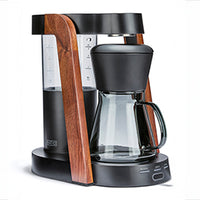 Ratio Eight S2
Ratio Eight S2
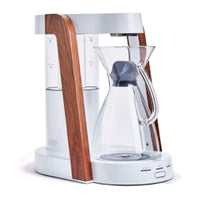 Ratio Eight Original
Ratio Eight Original
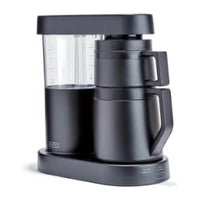 Ratio Six
Ratio Six
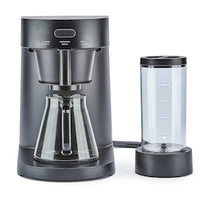 Ratio Four
Ratio Four
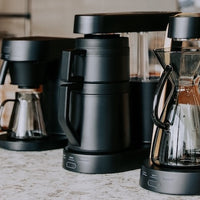 Compare Machines
Compare Machines






